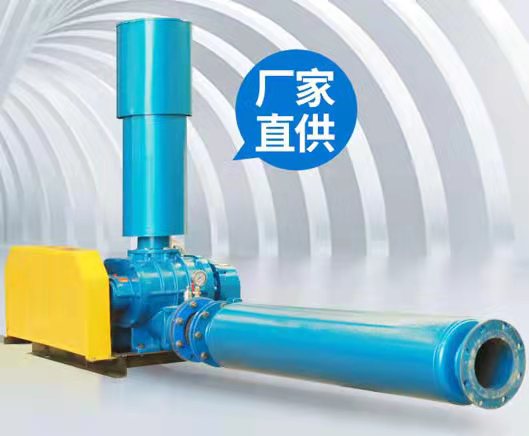The sewage treatment blower plays a crucial role in the sewage treatment system, and its main functions and commonly used fan types are as follows:

1、 The main function of sewage treatment blower
1. Oxygen supply: The main function of the sewage treatment blower is to provide sufficient oxygen for the sewage treatment system. In the process of sewage treatment, aerobic microorganisms require oxygen for biodegradation. The blower injects air into the sewage to ensure the dissolved oxygen content of the biochemical system and provide a suitable aerobic environment for aerobic microorganisms.
2. Mixing and Mixing: In addition to oxygen supply, blowers are also used for mixing and blending water bodies, promoting the mixing of chemicals and water, as well as sludge settling. This helps accelerate chemical reactions and biodegradation processes in wastewater, improving the efficiency of wastewater treatment.
3. Ventilation and air exchange: During the sewage treatment process, biogas and other decomposed gases are generated, which have unpleasant odors and may also pose a danger. The blower uses ventilation to remove harmful gases from the treatment site, ensuring a comfortable operating environment.
2、 Common types of fans
1. Roots blower: Roots blower is one of the commonly used types of blowers in sewage treatment. It uses two or three leaf shaped rotors to make relative motion inside the cylinder to compress and transport gas. Roots blowers have the advantages of simple structure, stable operation, and strong adaptability, and are widely used in small-scale municipal and factory wastewater treatment.
2. Suspension fan: Suspension fan is another commonly used sewage treatment blower. It adopts air suspension bearing technology, which does not require lubricating oil and mechanical contact, thus having the advantages of low noise, small vibration, and easy maintenance. Suspended fans are suitable for situations with high requirements for noise and vibration.
3. Rotary fan: Rotary fan is also one of the commonly used types of blowers in sewage treatment. It uses the rotor to rotate within the cylinder to compress and transport gas. Rotary fans have the advantages of simple structure, low cost, and easy maintenance, and are suitable for small sewage treatment plants and laboratories.
4. Centrifugal fan: Centrifugal fans are also used in sewage treatment, especially when dealing with large amounts of gas. Centrifugal fans accelerate and discharge gas through high-speed rotating impellers, which have advantages such as high flow rate and stable pressure. However, centrifugal fans may have relatively high noise and vibration levels, and corresponding noise reduction and vibration reduction measures need to be taken.
In summary, the sewage treatment blower has multiple functions in the sewage treatment system, including oxygen supply, stirring and mixing, as well as ventilation and air exchange. When choosing a blower, it is necessary to comprehensively consider factors such as the specific needs, treatment scale, and operating environment of the sewage treatment system, and select the appropriate type and specifications of blower.





